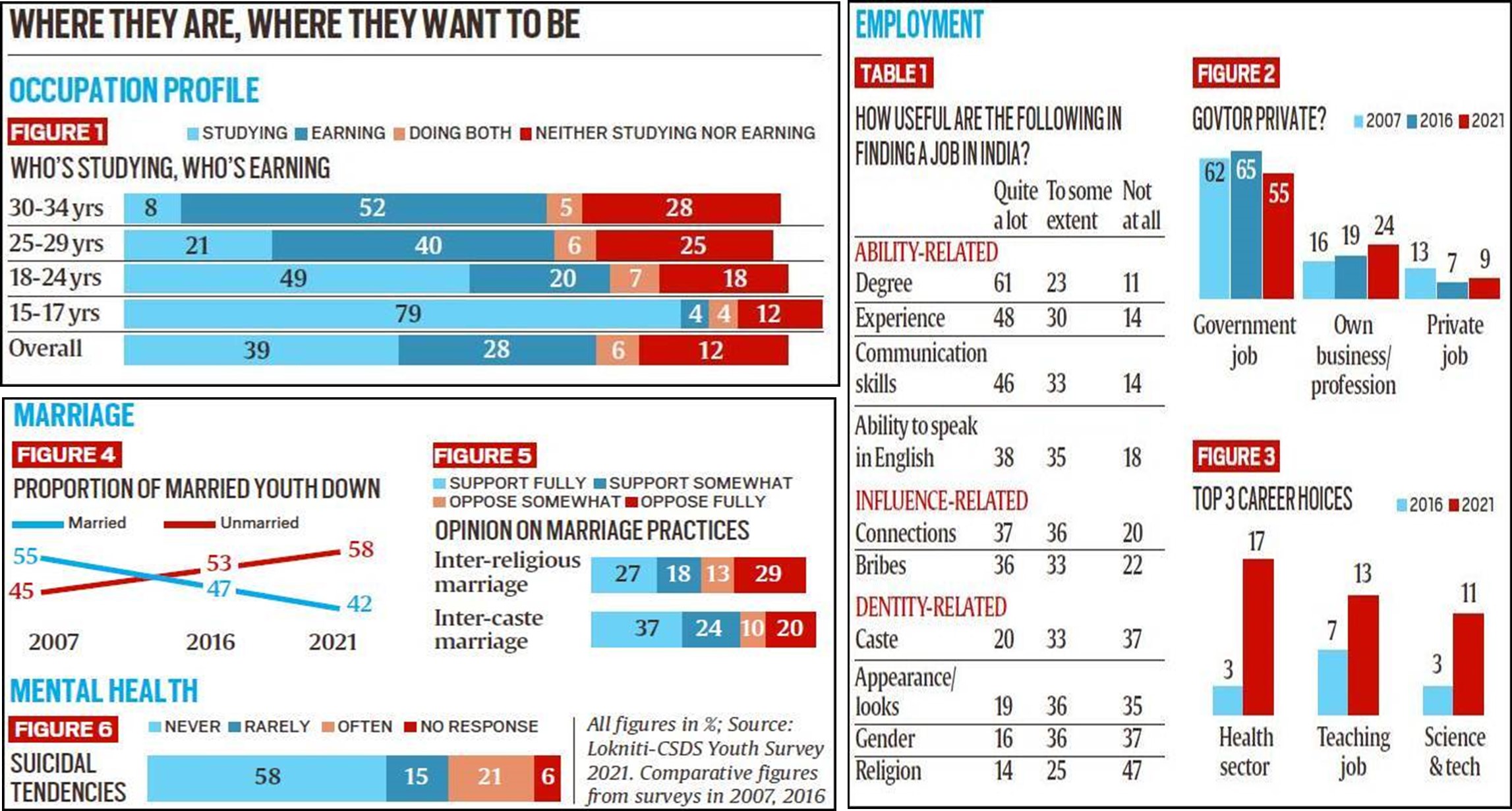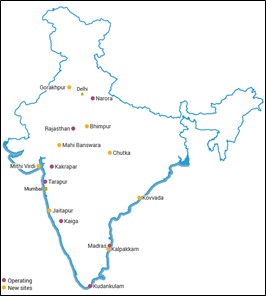Monday, 27th December 2021
Delimitation of Jammu and Kashmir UT
In News
The delimitation commission set up for J&K has proposed an extra six seats for the Jammu region, while only an increase of one seat has been recommended for Kashmir.
Proposals of the Commission
- The J&K Reorganisation Act, 2019 said that "the number of seats in the Legislative Assembly of UT of J&K shall be increased from 107 to 114 by way of delimitation of the constituencies determined by the Election Commission.
- Delimitation Commission for J&K headed by Justice (Retd) Ranjana Desai has said in its draft proposal that the Jammu division districts of Kishtwar, Samba, Kathua, Doda, Rajouri and Udhampur would each get one extra seat along with Kupwara district in Kashmir division.
- The delimitation panel also proposed reservation of nine seats in J&K for Scheduled Tribes while the number of Scheduled Caste seats remains seven.
- The proposed additional seats will take the total representation of Jammu region in the legislature to 43 from 37 and Kashmir will come to have 47 seats.
What is the controversy?
- The proposed delimitation leaves each assemblyconstituency with close to 5 lakh voters in Kashmir but the number of voters in each Jammu division seat is about 1.25 lakh.
- This may tilt the electoral balance in favour of the Hindu-majority Jammu division at the expense of the Kashmir Valley, which has a Muslim majority population.
- It has also been pointed out that the exercise should have been carried out after the completion of 2021 Census in place of the 2011 census data which has been used by the commission.
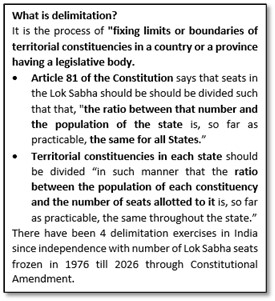
Factors considered by the Commission:
The Commission has taken into account several factors while redrawing the boundaries of the constituencies of the UT. These are in accordance with the delimitation acts from 1952 onward and include:
- Population- 2011 census
- physical features, boundaries of administrative units,
- communication facilities and public convenience.
Generally, delimitation is conducted on the basis of the population. However, if there are issues that impede the smooth conduct of elections, they are addressed.
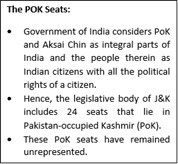
Sources:
Good Governance Index-2021
In News
The Central Government has released Good Governance Index for the year 2021.
About the News
- Ministry of Home Affairs released the Good Governance Index 2021 prepared by the Department of Administrative Reforms and Public Grievances (DARPG)
- The report was published on 25th December that is celebrated as Good Governance Day on the birth anniversary late former Prime Minister Atal Bihari Vajpayee.
What is Good Governance Index?
- GGI is a comprehensive and implementable framework to assess the State of Governance across the States and UTs which enables ranking of States/Districts.
- Objective is to create a tool that can be used uniformly across the States to assess the impact of various interventions taken up by the Central and State Governments including UTs.
- It categorises States and UTs into four categories, i.e., (i) Other States – Group A; (ii) Other States – Group B; (iii) North-East and Hill States; and (iv) Union Territories.
- The score and ranks for GGI 2020-21 are computed based on 58 indicators and ten sectors instead of 50 Indicators and nine sectors of GGI 2019 after inclusion of new indicators and omission of obsolete indicators.
- It is a bi-annual exercise. For ranking the States based on these selected sectors and indicators, two approaches emerged:
- present status – called as Absolute, and
- incremental improvements – called as Growth.
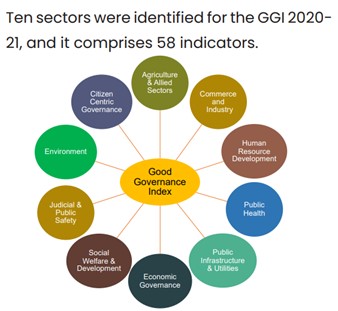
What are the major highlights of the report?
- Gujarat tops composite ranking followed by Maharashtra and Goa; Delhi is the top UT.
- Very marginal difference among the states in their composite governance scores indicating that overall governance in the states of India is moving in the positive direction.
- Uttar Pradesh has shown an incremental growth of 8.9% over GGI 2019 performance securing top position in Commerce & Industry sector including an increase in Social Welfare & Development and Judiciary & Public Safety.
- Jharkhand witnessed a growth of 12.6 per cent over last year performance.
- Rajasthan has shown an incremental growth of 1.7 per cent over the past year’s index and topped the Other States (Group B) category in Judiciary and Public Safety, Environment & Citizen Centric Governance.
- In the North-East and Hill States category, Mizoram and Jammu and Kashmir registered an overall increase of 10.4% and 3.7% respectively over GGI 2019.
Why is the index important?
- Rankings helps to improve citizen services and make the government inclusive and accountable.
- Additional process and input-based indicators makes GGI more wholistic tool of measuring governance.
- Data available for index computation will help in analysing qualitative aspects and approaches for inclusion process.
- Good governance will help in curbing corruption and facilitate clean and transparent administration.
- Index would also help to assess the status of governance in states and Union Territories.

Sources:
Impact of socio-demographic factors on Maternal Mortality
In News: A recent study has noted that Poverty has been the key factor in determining institutional delivery.
Analysis of the Report
- What does the Report Analyse? The study analyses data on State-level maternal mortality ratio (2016 to 2018), as well as the National Family Health Survey-4 (2015-2016).
- Maternal Mortality Rate: India has a maternal mortality rate of 113 per 100,000, and the rate remains “alarmingly high” in these nine States at 161 deaths per 100,000.
- Data on Low Performing States (LPSs):
- Nine low-performing States (LPS) which have high burden of maternal mortality are Assam, Bihar, Chhattisgarh, Jharkhand, Madhya Pradesh, Odisha, Rajasthan, Uttar Pradesh and Uttarakhand.
- These States constitute about half of the country’s population and contribute 62% of maternal deaths, 71% of infant deaths, 72% of under-five (years) deaths, and 61% of births in the country and also 12% of global maternal deaths.
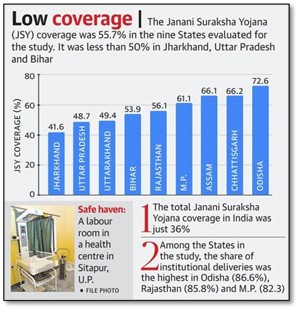
- Socio-demographic factors affecting institutional Delivery:
- Poverty: Poverty has been responsible more than twice as much as age at marriage in determining whether a woman will seek institutional delivery.
- Education: Education is found to be 1.5 times more important than age at marriage.
- Other Factors: Among other factors, interaction with a community health worker and awareness campaigns have found to have a greater impact than age at marriage. However, distance to the health facility and age at marriage had almost similar influences on institutional deliveries.
- Performance of States:
- The influence of educational attainment has appeared to be strongest in Assam and Chhattisgarh, where women with a higher level of education were about five times more likely to deliver in a health facility than women who had no education.
- In Assam, women from the richest wealth index were almost 14 times more likely to deliver in a health institution than those from the poorest wealth index..
- Barriers in accessing Institutional Deliveries: About 17% of women have expressed distance or lack of transportation, and 16% cited costs, as some of the barriers/challenges with other reasons being facility closures (10%), poor service or trust issues (6%) etc.
- Recommended interventions: State-specific interventions have to be more effective not only to increase the number of public health facilities but also to improve associated quality of care. This is because, inadequate clinical training and insufficient skilled human resources would affect the quality of available maternity services resulting in low coverage of institutional deliveries.
Source:
Image Source:
National Anthem sung for First time
On December 27, 1911 the National anthem of India Jana-gana-mana, composed originally in Bengali by Rabindranath Tagore was sung for the first time at the Calcutta Session of the Indian National Congress. ‘Jana Gana Mana’ was adopted as the country’s National Anthem by the Constituent Assembly of India on January 24, 1950, the last day of its last session. The complete song consists of five stanzas. ‘Jana Gana Mana’ is the first stanza of the Bengali hymn ‘Bharoto Bhagyo Bidhata’, written by Nobel Laureate Rabindranath Tagore. A slightly varied version of the song was adopted by Subhash Chandra Bose’s Indian National Army in 1941 as the national anthem, called ‘Shubh Sukh Chain’, which also became popular in India since. On August 15, 1947, after India’s first Prime Minister Jawaharlal Nehru unfurled the Tricolour on the ramparts of the Red Fort and addressed the nation, Capt Thakuri of the INA, who had given music to the ‘Subh Sukh Chain’ version, was invited to play with members of his orchestra group. Reverence to the National Anthem is a Fundamental duty in India. According to Article 51A (a) of the Constitution: “It shall be the duty of every citizen of India to abide by the Constitution and respect its ideals and institutions, the National Flag and the National Anthem”.
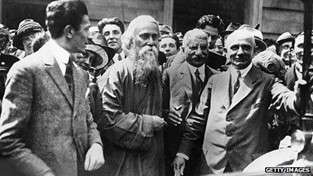
Sources:
Understanding EWS
In News
A three member-committee has been set up by the government to examine the income criteria for determining the economically weaker sections (EWS).
About the News
- The Committee has been set up after the Supreme Court questioned the income criteria for defining EWS, and termed it “arbitrary”, noting that the ceiling for determining EWS (Rs 8 lakh) is the same as the limit for determining the other backward classes (OBC) “creamy layer” for reservation for the children of people outside of government.
- So, the Ministry of Social Justice and Empowerment announced the committee to “revisit the criteria for determining the economically weaker sections” in terms of the provisions of the explanation to Article 15 of the Constitution.
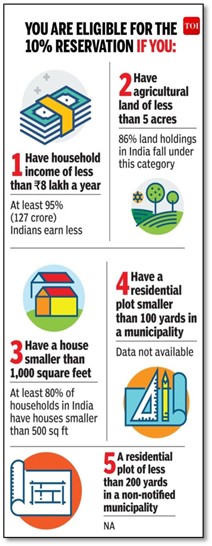
What is Economically Weaker Sections (EWS)?
- About: EWS is a term used to refer to those citizens or households with income below a certain threshold level. The 10% EWS quota was introduced under the 103rd Constitution (Amendment) Act, 2019 by amending Articles 15 and 16.
- Similar to EBC: A concept similar to EWS used in India, is Economically Backward Classes (EBC). Citizens having annual income less than Rs.1 lakh and who do not belong to any social category such as Schedule Caste, Schedule Tribe and Other Backward Classes (SC/ST/OBC) have been categorized as Economically Backward Classes (EBCs).
- Basis for Income Ceiling: In order to maintain parity with BPL and similar categories, the income/wealth test made applicable in the case of OBCs for the purpose of exclusion from the benefit of reservation was also applied in the case of EWS i.e. Rs 8 lakhs.
What are the provisions under the EWS category reservation?
- EWS category was introduced to promote the welfare of the poor not covered by the 50% reservation policy SCs, STs and Socially and Educationally Backward Classes (SEBC).
- The reservation was granted based on the recommendations of the 2010 committee headed by S R Sinho.
- The 103rd Constitution Amendment added Clause (6) to Article 15 to give the government the authority to make special provisions for the EWS among citizens who are not already eligible for reservation.
- It allowed up to 10% reservation in public and private educational institutions, whether aided or unaided, with the exception of minority-run institutions. It also added Clause (6) to Article 16 to make employment reservations easier.
- Twenty five percent seats to be increased in higher educational institutions to provide for the 10% reservation.
What can be the problems associated with criterions of the EWS reservations?
- Not in Synch with Constitutional Provision: A common feature that forms the basis of reservation for SCs, STs, and OBCs under Article 46 of the Constitution is ‘social injustice and backwardness'. Since this is not a predominant element in the case of EWS, where poverty is the sole basis for grant of reservation, it does not meet the test of Article 46.
- Also Economic backwardness is quite a fluid identity. It can change at any moment. Moreover, it has more to do with individuals and families, rather than a cluster of castes.
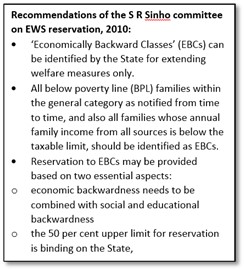
- Reservation in Educational Institutions: The Supreme Court has repeatedly held that the main reason for making reservation in admission to educational institutions under Articles 15(4) and 15(5) must be that a class, apart from being “socially backward”, must be “educationally backward”. However, the new Article 15(6), providing for reservation in educational institutions for EWS, is silent about the key condition of educational backwardness.
- Reservation in Public employment: The reason for making reservation in public employment under Articles 16(4) and 16(4A), must be that the class, apart from being “backward”, i.e. “not adequately represented in the services under the State.” Article 16(6), providing for reservation in public employment for EWS, is also silent about the key condition of “not adequately represented in the services under the State.”
- Lack of Data: The Union or state governments have no such data to prove that ‘upper’ caste individuals, who have less than Rs 8 lakh annual income, are not adequately represented in government jobs and higher educational institutions.
- Lack of Basis for 10% Quota: The SC and ST quota is based on their total population. OBC population, according to the Mandal Commission, is 52 per cent, but as there is a cap of 50 per cent on reservation, the OBCs got 27 per cent. But what is the rationale for the 10 per cent quota for the EWS sounds arbitrary.
- Breach of 50% Reservation Ceiling: In the Indira Sawhney case, the nine-judge Constitution bench put a cap of 50 per cent on reservation. The EWS quota breaches this limit and also finds no mention in the amendment Act.
- Ceiling beyond taxable Limit: The union government further submitted, in reference to the claim that the Sinho Commission recommended the identification of those whose family income is below the taxable limit may be identified as EWS. However, at present, only annual income under INR 2.5 lakhs is not taxable. Therefore, there is no “income tax limit” of INR 8 lakh per annum.
- No basis for Asset Identification: The Supreme court has questioned the basis on which the asset exception has been arrived at; whether municipalities as required under the exception have been notified; the reason why the residential flat criterion does not differentiate between metropolitan and non-metropolitan areas.”
What can be the possible impacts of the EWS reservation?
- Increase Reservation Demands: In recent years, the influence of castes such as the Marathas, Rajputs, and Jats have hit the streets in search of reservation benefits, sometimes violently protesting. Thus, such EWS like amendments can open the Pandora’s box of such demands.
- Overburden the educational Institutions: The 25% seat increment in higher educational institutions, without sufficient financing and about 33% vacant post, would overburden of the current workforce.
- Affect the Merit Quota: Irrespective of one’s category, the reservation for EWS would affect the seat share accessible to all the categories except the EWS. Even though the government has stated that the EWS quota does not tamper with the existing quotas for SCs, STs and OBCs, the merit quota has shrunk.
- Dilution of Caste-based reservation: The reservation for EWS can a dilution of caste-based reservations, and the beginning of the end of the original rationale of granting reservation as an affirmative action against the oppressive caste system and untouchability..
Way Forward
- The committee formed by the government to revisit the EWS reservation must look into the Supreme Court’s known position that any reservation or norms for exclusion should be based on relevant data and hence a thorough study should be conducted to satisfy the criteria for the EWS.
- Study needs to be carried out to check whether the per capita income or GDP in all States, or the difference in purchasing power in the rural and urban areas, were taken into account while a single income limit was formulated for the whole country. Similarly, other parameters need to be studies to derive the exceptions such as why the flat criterion does not differentiate between metropolitan and non-metropolitan areas.
- The impact assessment of the EWS reservation needs to be carried out to avoid any collateral damage to the other reservation provisions, the economy & infrastructure of educational institutions and the ramifications on the social fabric.
Question: Discuss the EWS category reservation, along with the problems associated with it.
Sources:
- Explained: Revisiting definition of EWS
- Reservation for EWS
- EWS quota is a bad law, it needs to go
- EWS reservation in higher education: Affirmative action or vote bank politics?
- Centre’s justification for Rs 8 lakh income limit for EWS reservation erases distinction between ‘general’ and ‘OBC’ categories, based on misleading claims
- Reservation for economically weaker sections: one-year analysis
- Explained | Why is the Centre going to revise income eligibility limit for economically weaker sections?
- Economically Weaker Sections (EWS)
- India: Economic Reservations: A Constitutional Challenge
Baby Yingliang
This is image of Dinosaur egg and embryo reconstruction. From the rocks of Ganzhou in southern China, researchers have discovered a 72-to 66-million-year-old embryo inside a fossilised dinosaur egg. The embryo, named ‘Baby Yingliang’ belongs to a toothless theropod dinosaur group called oviraptorosaur. Oviraptorosaurs lived during the Cretaceous period(145 to 66 million years ago) in Asia and North America. The most interesting find was the posture of the embryo. Its head lies below the body, with the feet on either side and the back curled along the blunt end of the egg. This posture is similar to that seen in modern-day bird embryos. The embryo was found inside a 17-cm long egg and the creature is estimated to be 27 cm long from head to tail. The specimen is now housed in China’s Yingliang Stone Nature History Museum.

Source:
Digital Berlin Wall
- Context: International Monetary Fund chief has recently warned of 'digital Berlin Wall'.
- Digital Berlin Wall signifies the deepening digital divide among the countries which would lead to the loss of global GDP.
- This is because of countries closing their digital economy with one another. Countries are resorting to policies like Data localization and other means of isolating their digital economy, which is most significant for developed regions like China, USA and EU.
- This will push the countries back to a similar situation when the economy was not opened for goods and services, but this time it is for data.
- This concept has been derived from the event of construction of Berlin wall in 1961 which divided Berlin into west and east Berlin based on the ideological difference of capitalism and communism respectively which had stopped the all the transaction between the two parts.

Source:
- International Monetary Fund chief warns of 'digital Berlin Wall'
- IMF Chief Warns of ‘Digital Berlin Wall’ That Would Hurt Growth
Image Source:
Democracy Summit
- Context: United States president Joe Biden has hosted ‘Democracy summit’ with leaders from over 100 nations attending it virtually.
- It is an initiative aimed to support free media, fight corruption, strengthen democratic reforms, for use of technology for democracy and for defence of free and fair elections globally.
- This is in the backdrop of military coup in Myanmar, Taliban toppling democratically elected government in Afghanistan, Cheque Diplomacy of China and a Global decline in democracy as indicated by various indices like Economist Intelligence Unit (only 9% of global population is currently living in free democratic regions).
- The participation of India was very much significant because - India is the world’s biggest democracy but it has been backsliding in democracy score. American freedom House has downgraded India’s status to “Partly free”, and Swedish V-Dem has called India “Electoral Autocracy”.
- Now India has to present the reason for its policy decision which has led to its decline in the score at the summit.
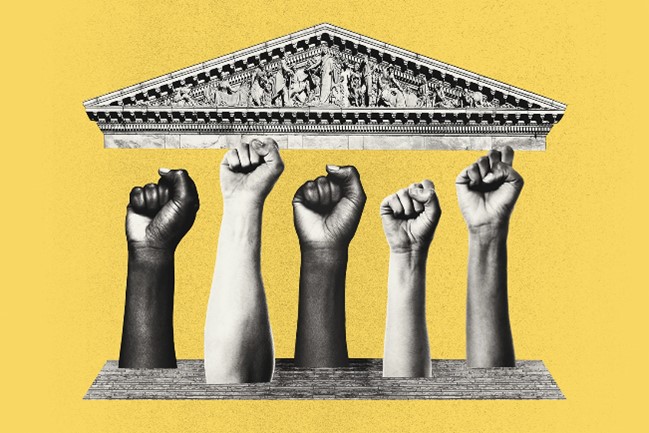
Source:
- Democracies should shape social media, cryptocurrencies, says PM Modi
- At Biden’s Summit for Democracy, Modi Says Countries Should Follow Constitutional Principles
Image Source:
INS Khukri
- Context: India’s first indigenously built INS Khukri Missile Corvettes, has been decommissioned recently.
- Missile Corvette are agile high-speed ships and have considerable firepower. They are ideal for a littoral environment.
- INS Khukri was built in 1989 indigenously by the Mazagaon Dock
- When it was in the Indian Navy, this missile corvette had travelled a distance of over 6,44,897 nautical miles that is almost three times distance between the Earth and the Moon/ is equivalent to navigating 30 times round the globe.
- The Indian Navy has four corvettes namely INS Kamorta, INS Kadmatt, INS Kiltan and INS Kavaratti that were commissioned in 2014, 2016, 2017 and 2020 respectively.

Source:
- INS Khukri sails away into the sunset, served India for 32 years
- INS Khukri, 1st Of The India Built Missile Corvettes, Decommissioned After 32 Years
Image Source:
‘NSE Prime’
- Context: The National Stock Exchange (NSE) has recently launched ‘NSE Prime’
- It is a new corporate governance initiative/framework that prescribes higher standards of corporate governance for listed companies than those required by regulations.
- All the NSE-listed companies can adopt NSE Prime voluntarily and will need to comply with pre-defined norms on an ongoing basis, which will be monitored by NSE.
- The initiative will:
- raise the bar for corporate governance standards in India,
- enable investors to identify companies that have voluntarily signed up for higher standards of corporate governance,
- broaden the quality of investors in listed companies and
- strengthen trust in Indian capital
- Therefore the initiative will not only help companies and investors but also accelerate market development at large.

Source:
- National Stock Exchange launches ‘NSE Prime’ to raise corporate governance bar
- National Stock Exchange launches NSE Prime
Image Source:
The pitfalls of legalizing farm support prices:HBL
Essence: The article discusses the history of Minimum Support Price (MSP) that started in 1965 covering just wheat and paddy. The article also gives a picture of how the MSP does not take into account the cost of depreciation which results into crop production becoming unprofitable. The writer also highlights the flaw in the current procurement system and contemplates over legalizing MSP.
But legalizing MSP would have many issues associated to it. One being that it would create huge burden on the exchequer. With time fruits and vegetable farmers along with dairy farmers might also start demanding it. It is high time to realize that legalizing the MSP is the not the ultimate panacea because the method of calculating it is faulty. Along with the exploitation by middleman and private traders do not allow the benefits to reach the famers further aggravating the situation.
Why you should read this article?
- To understand the evolution of MSP in the country.
- To understand the defects in the procurement system of the country.
- To understand the issues with legalizing MSP in the country.
- The article provides fodder to supplement the answer regarding MSP. (GS-3, Economy, Agriculture)
Source:
Disaster management: How India is improving its existing capabilities: HT
Essence: Disaster management has evolved over the years in India from responding and handling post occurrence of disaster to assessing the threats to strengthening the capacity of communities and creating disaster-resilient infrastructure. India’s announcement of Infrastructure for Resilient Island States (IRIS) initiative at Glasgow climate conference was an attempt to draw world’s attention to the urgent need of finding new, smarter, and more effective ways of managing disasters.
India’s geo-climatic conditions make it one of the most disaster-prone countries in the world. International cooperation in disaster management is, therefore, critical to India for the effective handling of disasters within its borders as well as the region. The government has taken initiatives like the transfer of subject of disaster management from ministry of agriculture to the ministry of home affairs, training volunteers as Apada Mitras and Apada Sakhis and strengthening of the disaster management authorities and agencies at the state and district level in hazard-prone districts. COVID-19 has exposed the disaster-managing ability of most countries in the health sector where natural disasters compounded the stress caused by the pandemic. The intensity of disasters can be moderated if adequate preparedness and risk reduction measures are in place.
Why you should read this article?
- The article helps in understanding how there is a need of change of strategy in disaster management and mitigation methods.
- The article helps in understanding India’s role in strengthening disaster management in India as well as in the world.
Source:
Democracy and the US-India Relationship: HT
Essence: The editorial talks about the Democracy Summit, which according to the author was a mixed bag of output for global geopolitics. Certain degree of inconsistency was felt in inviting Pakistan (which didn’t show much keenness) and not inviting Bangladesh. A fair understanding about USA’s foreign policy got demonstrated through Taiwan’s participation.
India’s engagement at the summit stood out with increase in women participation, mechanics of election and democratic delivery of social services. India could share with the world, the democratic processes of electronic voting, biometric identification, or the distribution of certain public goods.
Both India and USA converge in realizing the long-term value of democracy, accommodating national interests and short-term modifications. Some challenges that remain in the way are issues relating to social media, misinformation, corrosive effects of unregulated digital tools, corruption and black money.
Why you should read this article?
- To understand the inconsistencies in participation in Democracy Summit.
- To analyze the strengths and weaknesses of India and USA related to growth of democracy around the world.
Source:
1000 Springs Initiative
Background
- According to WHO reports, globally 827,000 people die as a result of inadequate water, sanitation, and hygiene every year. This makes socio-economic development difficult.
- Aligning with initiatives like ‘1000 springs’, in order to address the water scarcity in Tribal areas, the Ministry of Tribal Affairs has partnered with the United Nations Development Programme (UNDP) to harness the potential of springs to meet the scarcity issue.
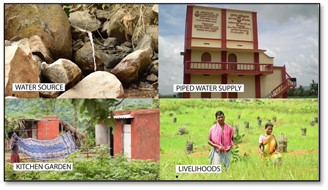
How does the 1000 Spring Initiative help?
- The 1000 spring initiative identifies, rejuvenates natural springs which then supports communities by improving sanitation, nutrition, and
- Youths from indigenous tribal communities are trained as barefoot hydrologists by leveraging traditional and scientific knowledge.
- It also encourages the community to practice contour- trenching, which is the digging of ditches to hold overland runoff rainwater so that it can percolate slowly into the soil. Moreover, they also engage in
- This initiative has helped identify 554 springs covering 116 habitations in 11 districts of More than 150,000 indigenous species of trees have been planted in the springs’ catchment areas to reduce the rainwater runoff and increase the moisture content of soil for sustainable recharge of the aquifers.
Quote:
” The earth, the air, the land and the water are not an inheritance from our fore fathers but on loan from our children. So we have to handover to them at least as it been handed over to us.” – Mahatma Gandhi
Source:
Share the article
Get Latest Updates on Offers, Event dates, and free Mentorship sessions.

Get in touch with our Expert Academic Counsellors 👋
FAQs
UPSC Daily Current Affairs focuses on learning current events on a daily basis. An aspirant needs to study regular and updated information about current events, news, and relevant topics that are important for UPSC aspirants. It covers national and international affairs, government policies, socio-economic issues, science and technology advancements, and more.
UPSC Daily Current Affairs provides aspirants with a concise and comprehensive overview of the latest happenings and developments across various fields. It helps aspirants stay updated with current affairs and provides them with valuable insights and analysis, which are essential for answering questions in the UPSC examinations. It enhances their knowledge, analytical skills, and ability to connect current affairs with the UPSC syllabus.
UPSC Daily Current Affairs covers a wide range of topics, including politics, economics, science and technology, environment, social issues, governance, international relations, and more. It offers news summaries, in-depth analyses, editorials, opinion pieces, and relevant study materials. It also provides practice questions and quizzes to help aspirants test their understanding of current affairs.
Edukemy's UPSC Daily Current Affairs can be accessed through:
- UPSC Daily Current Affairs can be accessed through Current Affairs tab at the top of the Main Page of Edukemy.
- Edukemy Mobile app: The Daily Current Affairs can also be access through Edukemy Mobile App.
- Social media: Follow Edukemy’s official social media accounts or pages that provide UPSC Daily Current Affairs updates, including Facebook, Twitter, or Telegram channels.

